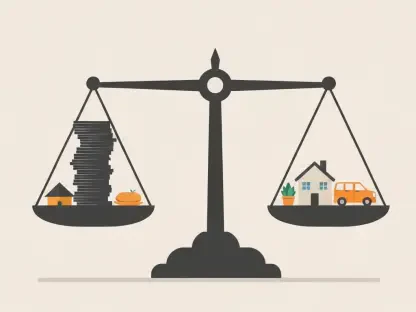Across the globe, transactional efficiency forms the backbone of trade, shaping economies in profound ways. Amid growing complexity due to cross-border transactions, organizations have sought ways to streamline payments. Here’s where international payment automation steps in, revolutionizing traditional methods and setting a new standard in efficiency and security. This advancement is not isolated; it is influencing financial landscapes, compelling industry leaders to adapt rapidly in order to remain competitive. With this review, the focus shifts toward discerning the nuances of this evolving technology, its influential components, and its broader implications that drive modern businesses forward.
Unveiling International Payment Automation
The intrigue of international payment automation lies in its ability to seamlessly execute large volumes of transactions with minimal human intervention. At its core, this technology facilitates multi-channel transactions, merging speed with precision, and ensuring data reliability throughout the process. Emerging from demands for improved efficiency and agility in financial operations, it combines automation with cutting-edge compliance frameworks, relevant in overhauling the previous manual processes that were riddled with inefficiencies. As the technology positions itself within the current digital transformation landscape, businesses worldwide are compelled to explore its integration to optimize costs and reduce operational risks.
Essential Elements and Groundbreaking Developments
Automated Transaction Processing
Automated transaction processing forms the bedrock of international payment automation, ensuring rapid execution and precise validation of payments across borders. Relying on sophisticated algorithms, this component delivers unmatched efficiency in handling transactions, significantly reducing processing times compared to traditional methodologies. The significance of this feature is multidimensional, impacting cost management and improving the financial scalability of institutions by rendering manual interventions obsolete. The performance of automated processing extends beyond speed, integrating analytics to provide insights managers can leverage for strategic decision-making.
Compliance with Global Standards
The quest for global interoperability is intertwined with integrating universally accepted compliance standards within automated systems. Emphasis on adhering to frameworks like ISO 20022 highlights the necessity for compliance within international transactions, bringing clarity and traceability. A solidification of security protocols ensures data protection and regulatory adherence, mitigating risks associated with cross-border exchanges. This aspect of automation extends well into fostering trust in financial institutions, crucial for sustaining the credibility and adoption of automated systems on a global scale.
Evolution and Emerging Patterns
The pace of development in international payment automation is continually accelerating, driven by technological advancements and changing consumer behaviors. Innovative solutions are emerging at the intersection of machine learning and blockchain technologies, signaling potential disruptions in payment processing paradigms. Trends point to increased demand for real-time payments and enhanced security measures amid growing cyber concerns. Businesses seeking a competitive edge are gravitating toward automated solutions capable of evolving alongside digital finance transformations, discovering novel pathways to redefine customer experiences and operational efficiencies.
Practical Applications in the Real World
Across diverse industries, international payment automation is making a tangible impact, redefining transaction methodologies in sectors ranging from banking to retail. Significant advancements are evident within banking systems where automation has reduced transaction processing times and elevated customer service experiences. Notable implementations can be observed in trade finance, where automation expedites document flows for exporters and importers, reducing bottlenecks and facilitating smoother economic interactions between countries. Companies leading innovation in financial services are leveraging this transformation to bolster strategic objectives, positioning themselves favorably in increasingly competitive markets.
Obstacles and Constraints
Despite its transformative potential, challenges persist in realizing the full capabilities of international payment automation. Technical complexities arising from integrating legacy systems present hurdles, requiring substantial resources and expertise to overcome. Regulatory barriers vary across regions, impeding universal implementation and necessitating tailored approaches to compliance. These constraints warrant continuous efforts to develop adaptive frameworks that ensure seamless integration while addressing regional variations. Future progress hinges upon overcoming these impediments through collaboration and innovation, paving the path for broader adoption and sustainable scalability.
Projected Developments
As financial ecosystems evolve, international payment automation is poised for pivotal advancements that may well redefine the industry. Prospects include integrating artificial intelligence to further enhance transaction validation processes and employing data analytics to predict consumer behavior patterns. This technology harbors potential expansions into mobile platforms, driving accessibility and convenience for end users. Long-term implications forecast automation’s role in shaping future economic landscapes, fundamentally altering how transactions are conducted, analyzed, and leveraged for strategic growth.
Final Thoughts
The review of international payment automation reveals a technology that was destined to reshape financial landscapes through groundbreaking innovations. Enthusiasts see potential paths for development that, as of now, hold valuable promise for enhancing transactional efficiency and reliability. Solutions rooted within this technological framework thrive as enablers of elevated financial interactions, setting new standards for industry practices across diverse sectors. Businesses adopting this future-forward approach discovered enhanced operational efficiencies and established positions of leadership within their markets. This transition marked a foundational shift toward automation, offering answers to challenges facing modern finance, and mapping directions for future development.









